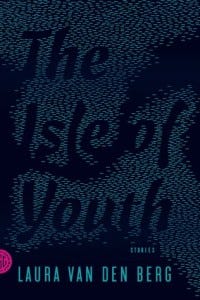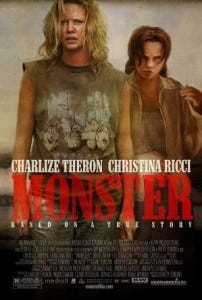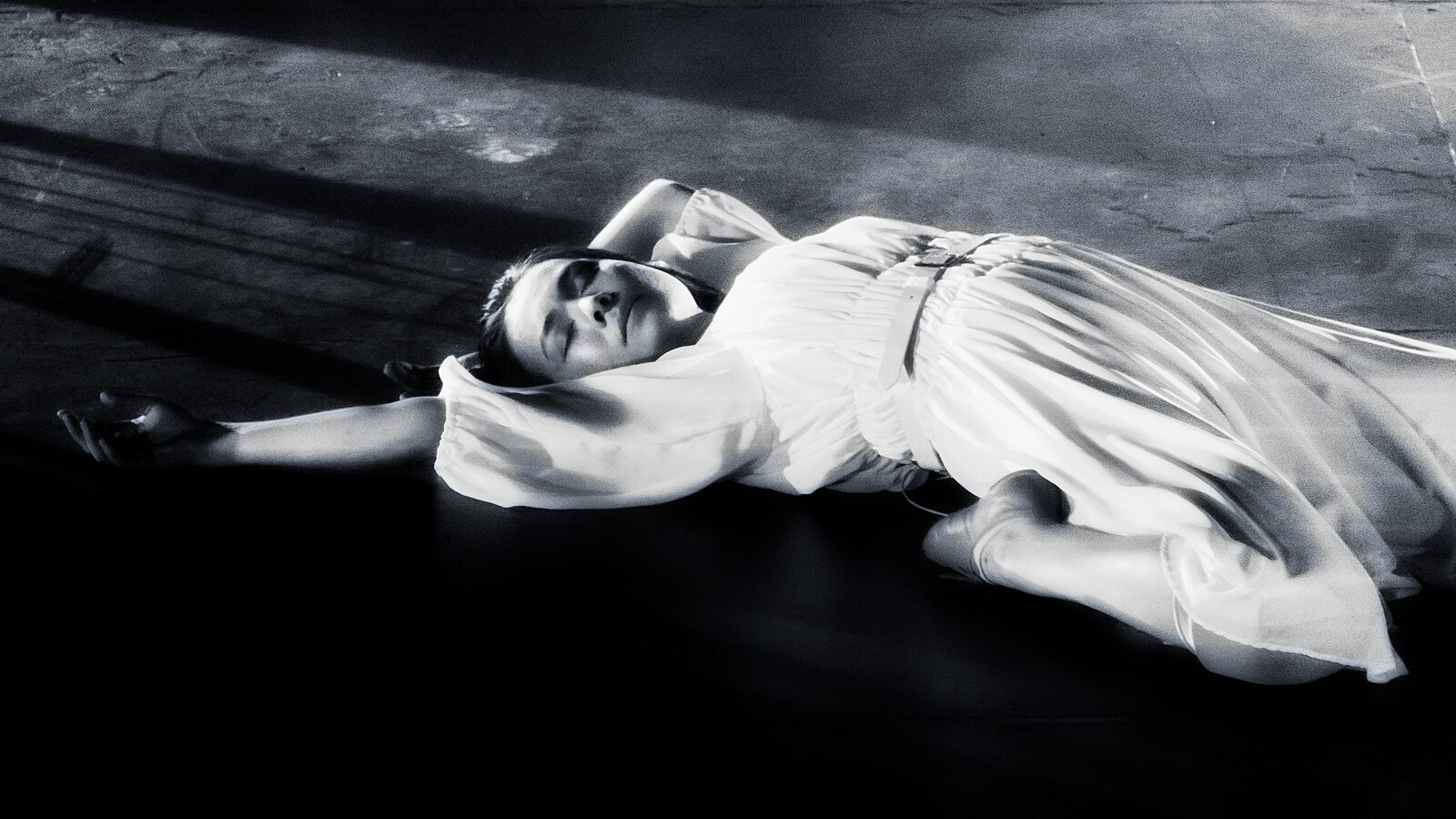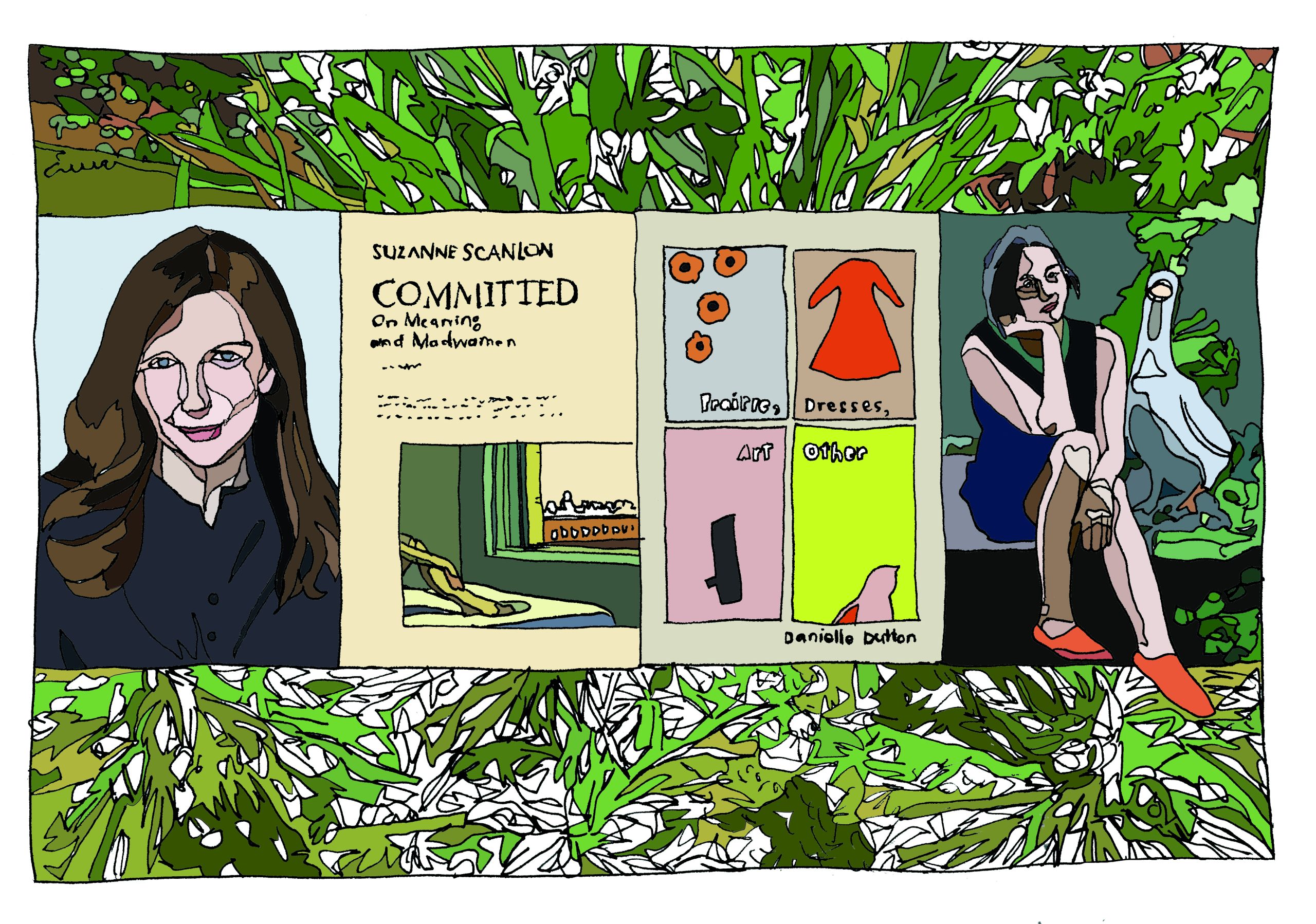essays
Media Frankenstein #8: Florida


THE HEAD: The Sisters of Mercy’s A Slight Case of Overbombing: Greatest Hits, Volume 1 (1993)
I wasn’t raised in Florida. San Diego saw me through my childhood and adolescence until I moved to the East Coast for college. Currently, I live in New Orleans, which is nothing, of course, like San Diego. San Diego has boardwalks and neon and flautas; New Orleans has gators and crime and parades. Both have palm trees, lots of palm trees, some of them native, but most of them not. And so it stands to reason that Florida, or anyway the idea of Florida — in some ways an amalgam of Southern California and Southern Louisiana — is a place I’ve been circling all my life, though I have only sort of been there. As a boy, I went to West Palm Beach, say, a dozen-times-plus to kibitz with grandmother. Walking its streets is an experience I can only describe (cribbing roughly from my father) as “touring the site where a neutron bomb hit, wiping out everyone except for the old people.” Not that West Palm Beach is shabby. It has a cauterized pristineness; planter boxes, blasted granite. And yet I sensed beyond the palms and the ocean’s susurrus a tingle of something — something weird and unknowable, almost uncanny, beneath the veil of what was seen. I would come to recognize this feeling later in the bland, politicized way educated adults recognize most everything that evades them as children: Florida is a complex place. Its crossfade of cultures, its flora and fauna, its palatial golf courses and acres of swamp, and all too often in the news its seismic wealth gap and its prejudiced laws, its environmental ignorance and failed prison system. Even on a surface level, the state is bizarre in its very overtness — Miami’s beachfronts and the spires of Walt Disney, Lake Worth’s esplanades and the tracks of Daytona. No place can look like this, you think, and not have something else behind it. Ergo, as a child, that sensation I had that what I was seeing was not what I saw. What better band, then, to embody this feeling than what I was listening to at sixteen: the British Goth-rock outfit The Sisters of Mercy — specifically, 1993’s greatest hits volume A Slight Case of Overbombing, sprawling in running time, sinister-kitschy, with an almost Wagnerian over-production. Since I was a hot-weather Goth I can tell you: combat-boots appear black, even blacker, in sunshine. Emerging originally out of the mid-to-late 80s with Andrew Eldritch (born Andrew William Harvey Taylor) on vocals and (personified drum-machine) Doktor Avalanche on beats, Sisters of Mercy epitomize a subcultural moment so glittering and distinct that you need shades to see it: the 1980s’ death-rock scene. And even though A Slight Case of Overbombing contains only one direct reference to Florida in the locomotive of sleaze that is 1990’s “Doctor Jeep” (from the album Vision Thing) — “Everybody shouts on I Love Lucy/Pee Wee reads the evening news/A pre-owned song or a second-hand Uzi/Everybody got a job to lose/Here come the golden oldies/Here come the Hizbollah/Businessmen from South Miami/Humming AOR” — the record conjures up the state with every sax solo and dance-lick of bass. There is an artificiality to greatest hits albums that perfectly mirrors the Florida crux: packaged pleasure on the outside, incomprehension underneath. What’s more the band isn’t even American; they come from Leeds, England, an ocean away. And yet the album Vision Thing is a limey critique of Bush I’s presidency, whose family dynasty, years later, would come to have controlling stakes in Florida’s government via Jeb Jr. (Not to mention 2000’s election charade where Florida was the battleground, those “hanging chads” ushering W. to office.) Andrew Eldritch’s voice is a crooning lost soul among the drums and keyboard mists. The soaring female choruses on “This Corrosion” and “Dominion/Mother Russia” could score the revelation of a sunset over the Gulf of Mexico, arterial red and tangerine. If there is a better city-at-night driving song than “Lucretia, My Reflection” then I haven’t heard one, better still if it’s through Miami, Daytona Beach, Tampa, Orlando or any one of many of Florida’s cities, lit up garish and strange in the tarns of their bays. As Eldritch sings on “Detonation Boulevard,” another of the album’s standout tracks: “Through the angel rain/ Through the dust and the gasoline/ Through the cruelty of strangers/ To the neon dream… Long distance information/ Disconnect me if you can…” Under Florida’s wraparound shades there is gloom, but Sisters of Mercy don’t glare it away. They feed it to the drum-machine as the skirt of the hurricane blows into harbor.

THE TORSO: The Isle of Youth by Laura Van Den Berg (2013)
Laura Van Den Berg’s second collection of short stories endeavors a similar chipping-away of Florida’s sparkling exterior, the main difference being that several of the stories actually feature Florida. Van Den Berg, an Orlando native, has always written with a very specific kind of disquieting beauty about her home-state; she is not unlike Flannery O’Connor was to Georgia, for example, or Shirley Jackson to Massachusetts. The stories in The Isle of Youth serve up their noir with a bitter aftertaste of existential terror and uncertainty. In conversation with Jeff VanderMeer (The Southern Reach Trilogy, 2014), another Floridian, Van Den Berg had this to say on her provenance as a writer: “The storms, rapid growth and decay, the rotting heat: Florida is an extreme climate in many ways and it has imbedded in me a love for extreme landscapes, in addition to places that are weird and ungraspable. The harder it is for me to ‘sum up’ a place, the more it interests me, and I know that’s the Floridian talking.” In “Opa-Locka” (an actual Florida enclave “ten miles north of Miami” whose name “came from the Indian name Opatishawokalocka, which meant ‘the high land north of the little river on which there is a camping place,’” in Van Den Berg’s words), a pair of sister private eyes hired to tail a shady husband shack up in an apartment on the strip, “a Glock 22” on the “bedside table.” “It was a rough neighborhood,” Van Den Berg writes. “…I had tried to talk my sister into moving, citing crime statistics and reasonable rents in other neighborhoods, but she loved the two-story stucco building with the concrete balcony and the drained swimming pool half-filled with bottles and empty cigarette packs.” While in the title story “The Isle of Youth,” a pair of identical twins — one of them a party-girl, the other a librarian — meet in Miami to triage an “emergency” in the party-girl’s life that grows ever more vague as her present unravels. The agreement: the librarian-sister will pose as her twin so the party-girl sister can get out of town. Librarian-sister takes twin-sister’s pills, dons twin-sister’s makeup, haunts twin-sister’s haunts. Van Den Berg writes of a club on Miami Beach that the narrator visits, posing as her sister: “A stainless steel bar stretched down one side of the room; on the other, a staircase spiraled into the darkness upstairs. In the back, DJs stood on a stage and people danced beneath streams of flashing light. The lights made the dancing bodies look fragmented and strange.” Estrangement is common in Van Den Berg’s fiction. The characters know not why they do, only that they must recklessly follow their actions. They are as disconnected from themselves and each other as the ebbing and placeless landscape that contains them: its refuse-filled pools and its bass-thumping beachfronts. The only thing darker than life’s shadow-side is finding that life has no meaning at all, that the self is flagrant and garish façade. As the “The Isle of Youth[’s]” narrator reflects at the end of the story: “It was startling to see how many people I mistook for my sister…; it was even more startling to realize that to mistake someone for Sylvia was to mistake them for myself, that there were so many women who, in the dark, could pass for me.”

THE LEGS: Monster dir. Patty Jenkins (2003)
Where A Slight Case of Overbombing embodies Florida’s shadow-side and where The Isle of Youth pursues that shadow into Floridians’ hearts, Patty Jenkins’ film Monster, about serial killer Eileen Wuornos, chases it back to the place where it lives. Wuornos, who killed seven men while working as a prostitute between 1989 and 1990 in Florida, has a tragic life story of rape and abuse and homelessness and mental illness. Yet the film based on her life is disarmingly tender. The first scene has Wuornos (Charlize Theron) sitting in pouring rain beneath a freeway overpass, holding a loaded pistol. Later on, we learn that she was contemplating suicide. She goes to get a beer instead. In the bar she meets Selby (Christina Ricci), a woman hoping to pick her up, and even though Wuornos insists she is not gay, they become fast and ill-defined friends (Wuornos’ real partner was named Tyria Moore.) The rest of the film parallels Eileen’s descent into bloodthirsty madness alongside her relationship with Selby. Wuornos attempts to keep totally separate her love for her “girl” and her hate for mankind, and the way that the tension plays out in her psyche, which we can hear in voiceover, makes the film darkly funny but also heart-wrenching; we recognize Wuornos’ plight. To earn the money that supports them, Selby thinks Eileen is hooking, when in reality Wuornos is killing her johns and ransacking their cars and clothes. “I’ve done everything in the whole wide world hoping that you’d never have to know,” she says to Selby midway through the movie. “So you could go on thinking that people are good, and kind, and that shit makes sense, you know.” Charlize Theron is transcendently good in a performance that would later earn her the Best Actress Oscar in 2003. Much was made of her physical transformation for the role from red-carpet dame to itinerant hooker, and yet it is the little things that Charlize Theron really nails: Wuornos’ smile and her sharp, side-mouthed laugh, her swagger and her violent strength, the gleam in her eye for the woman she loves, her crackling demeanor before doing murder. As Wuornos is led out of the courthouse after her first conviction, having been sentenced to death (an execution that the State of Florida carried out in 2002), she clings to her love for Selby against eternity, which might seem tone deaf did it not work so well. Have you ever seen Bad Lieutenant: Port of Call New Orleans (2009)? Well, anyway, it’s a little like that. Wuornos narrates: “Love conquers all. Every cloud has its silver lining. Faith can move mountains. Love will always find a way. Everything happens for a reason. Where there’s life there’s hope. Hope — they got to tell you something.” The awkwardness of the emotional dynamics in this sequence is striking — oh beloved serial killer, true romantic to the end! — and while the viewer grapples with them, a grotesque poignancy starts to worm its way in. Wuornos could’ve done something else with her life but when life betrayed her she learned to do this. And in some ways, perhaps, Jenkins’ film could be viewed as the story of a woman who discovers her calling and with it true love, just with really bad timing. Florida is vital to the film for several reasons — not least of all its mis-en-scene of tract houses in grassy lots, of truck stops bathed in eerie blue, of the Florida sunset as red as a knife-wound. Van Den Berg’s protagonists are strangers to themselves, a quality reflected in the character of Florida, though never once in Jenkins’ film does Wuornos not know who she is. While Van Den Berg’s characters spiral away from themselves and the thing they are actively seeking, Wuornos grows comfortably into herself — her status as a person on the margins of life and her prodigious talent for murdering dirtbags. Misandry, it starts to seem, was waiting for her all her days. Monster returns Florida to itself: a fucked-up realm of biker bars and fleabag motels where you pay by the day and fast cars on the interstate with spoilers in the shape of sharks, some of them sub-woofing Sisters of Mercy as they speed toward the neon ramparts of the city. Wuornos’ weapon of choice is a gun: some of the men she shoots dead in their cars, while others she lures to their deaths through the forest. The scene in which she kills a man for no other reason than that he has seen her is anxious, nauseating stuff. When he mentions his family in hopes it will save him, she yells in agony and fires. In her off-hours, she and Selby visit somewhere called Fun World. Wuornos rides the bumper cars. She waves at Selby from the track with her stringy blonde hair and her soiled trucker cap and the night-palms of Florida harbor this gesture, recalling an innocence already lost.
Alternative Cuts:
Their Eyes Were Watching God by Zora Neale Hurston (1937); The Supremes’ Diana Ross and the Supremes: Greatest Hits (1967); The Paperboy dir. Lee Daniels (2012)
Mega-Python vs. Gatoroid dir. Mary Lambert (2011); The Southern Reach Trilogy by Jeff VanDermeer (2014); Deicide’s The Best of Deicide (2003)
Bully dir. Larry Clark (2001); Citrus Country by John Brandon (2010) and/or Swamplandia! by Karen Russell (2011); Lynyrd Skynyrd’s All Time Greatest Hits (2000)









